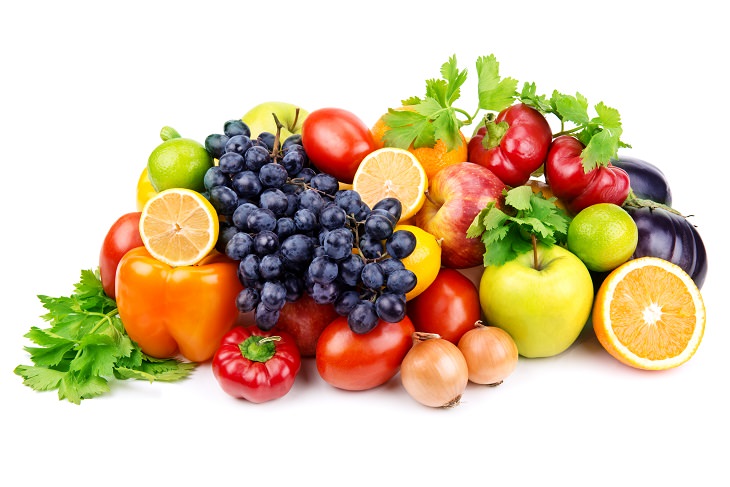
As we age, maintaining good health and vitality becomes increasingly important. Fortunately, one of the most powerful tools for promoting healthy aging lies right in our grocery stores: fruits and vegetables. Packed with essential nutrients, antioxidants, and fiber, fruits and vegetables play a crucial role in supporting overall well-being and longevity. In this article, we’ll explore the nutritional strategies behind incorporating fruits and vegetables into your diet to support healthy aging and enhance vitality as you grow older.
The Importance of Nutrition in Aging:
Nutrient Needs: As we age, our nutrient needs may change due to factors such as decreased absorption, changes in metabolism, and increased risk of chronic diseases. Consuming a nutrient-rich diet is essential for supporting optimal health and vitality throughout the aging process.
Antioxidants: Antioxidants, found abundantly in fruits and vegetables, help protect cells from oxidative damage caused by free radicals, thereby reducing the risk of chronic diseases such as heart disease, cancer, and neurodegenerative disorders.
Fiber: Adequate fiber intake is crucial for maintaining digestive health, preventing constipation, and reducing the risk of diverticulosis, a common condition among older adults. Fruits and vegetables are excellent sources of dietary fiber, supporting gut health and regular bowel movements.
Nutritional Strategies for Healthy Aging:
Increase Fruit and Vegetable Consumption: Aim to incorporate a variety of colorful fruits and vegetables into your meals and snacks each day. Different fruits and vegetables offer unique combinations of vitamins, minerals, and antioxidants, so eating a diverse range ensures you’re getting a broad spectrum of nutrients.
Focus on Phytonutrients: Phytonutrients, such as carotenoids, flavonoids, and polyphenols, give fruits and vegetables their vibrant colors and offer numerous health benefits. Include a variety of colorful fruits and vegetables in your diet to maximize your intake of these beneficial compounds.
Prioritize Nutrient-Dense Options: Choose nutrient-dense fruits and vegetables that offer a high concentration of vitamins, minerals, and antioxidants per calorie.
Incorporate Superfoods: Certain fruits and vegetables are considered “superfoods” due to their exceptionally high nutrient content and health-promoting properties. Examples include kale, spinach, blueberries, strawberries, avocados, and tomatoes. Incorporating these superfoods into your diet can provide a nutritional boost to support healthy aging.
Opt for Whole Foods: Choose whole fruits and vegetables over processed or canned varieties whenever possible, as they retain more nutrients and fiber. Fresh, frozen, and canned fruits and vegetables are all nutritious options, so choose whichever is most convenient and accessible for you.
Benefits of Fruits and Vegetables for Healthy Aging:
Heart Health: Fruits and vegetables are rich in heart-healthy nutrients such as potassium, magnesium, fiber, and antioxidants. Consuming a diet rich in fruits and vegetables can help lower blood pressure, reduce cholesterol levels, and decrease the risk of heart disease and stroke.
Brain Health: The antioxidants found in fruits and vegetables may help protect brain cells from oxidative damage and reduce the risk of age-related cognitive decline and neurodegenerative diseases such as Alzheimer’s disease.
Bone Health: Certain fruits and vegetables, such as leafy greens, broccoli, and citrus fruits, are rich in calcium, vitamin K, and other nutrients that support bone health and reduce the risk of osteoporosis and fractures.
Immune Function: The vitamins, minerals, and antioxidants found in fruits and vegetables play a crucial role in supporting immune function and reducing the risk of infections and illnesses, which becomes increasingly important as we age.
Practical Tips for Increasing Fruit and Vegetable Consumption:
Add fruits and vegetables to every meal and snack.
Experiment with different cooking methods, such as roasting, grilling, steaming, or sautéing, to enhance the flavor and texture of fruits and vegetables.
Keep a variety of fresh, frozen, and canned fruits and vegetables on hand for quick and convenient meal preparation.
Incorporate fruits and vegetables into your favorite recipes, such as soups, salads, stir-fries, smoothies, and sandwiches.
Explore local farmers’ markets and grocery stores for seasonal and locally grown produce to maximize freshness and flavor.
Incorporating plenty of fruits and vegetables into your diet is one of the most effective strategies for supporting healthy aging and enhancing vitality as you grow older. By focusing on nutrient-dense options, prioritizing phytonutrients, and diversifying your fruit and vegetable intake, you can optimize your nutritional status and reduce the risk of chronic diseases associated with aging. With a colorful and varied diet rich in fruits and vegetables, you can promote longevity, vitality, and overall well-being well into your golden years.




